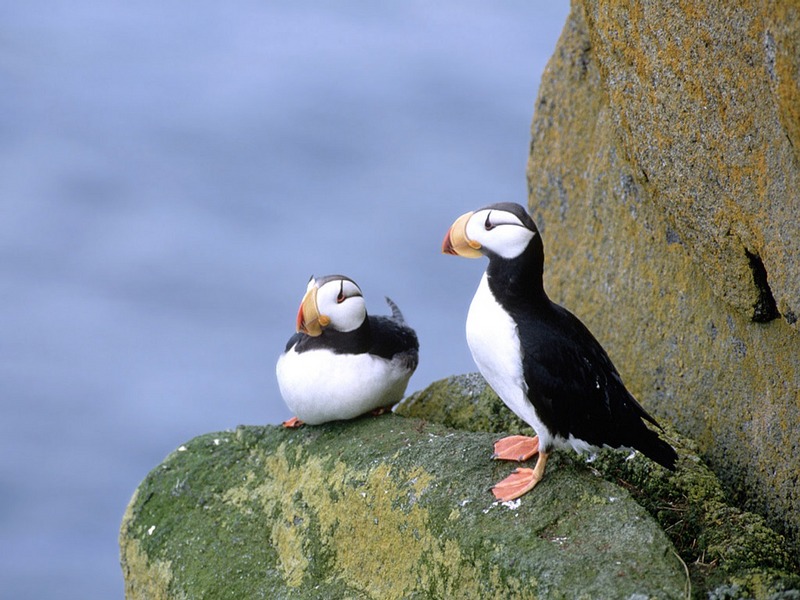|
| Query: Birds | Result: 3008th of 32675 | |
Screen Themes - Wild Birds - Horned Puffins
| Subject: | Screen Themes - Wild Birds - Horned Puffins
| | Poster: | Phoby (phoby@hanafos.com)
| |

| Resolution: 1152x864
File Size: 248554 Bytes
Upload Date: 2005:01:19 22:27:03
|
Not my photo, from a usenet newsgroup. Hope you just enjoy.
Horned Puffin (Fratercula corniculata) is an auk, similar in appearance to the Atlantic Puffin; this bird's bill is yellow at the base and red at the tip. It is a pelagic seabird that feeds primarily by diving for fish. It nests in colonies, often with other auks.
|
Comments |
|---|
| | Guest |
|
Scientific Name: Fratercula corniculata (Naumann, 1821)
Common Names: Horned Puffin
French: Macareux cornu German: Hornlund Spanish: Frailecillo corniculado
Taxonomy: Mormon corniculata J. F. Naumann, 1821, Kamchatka, Russia. |
^o^
Animal Pictures Archive for smart phones
^o^
|
|
|